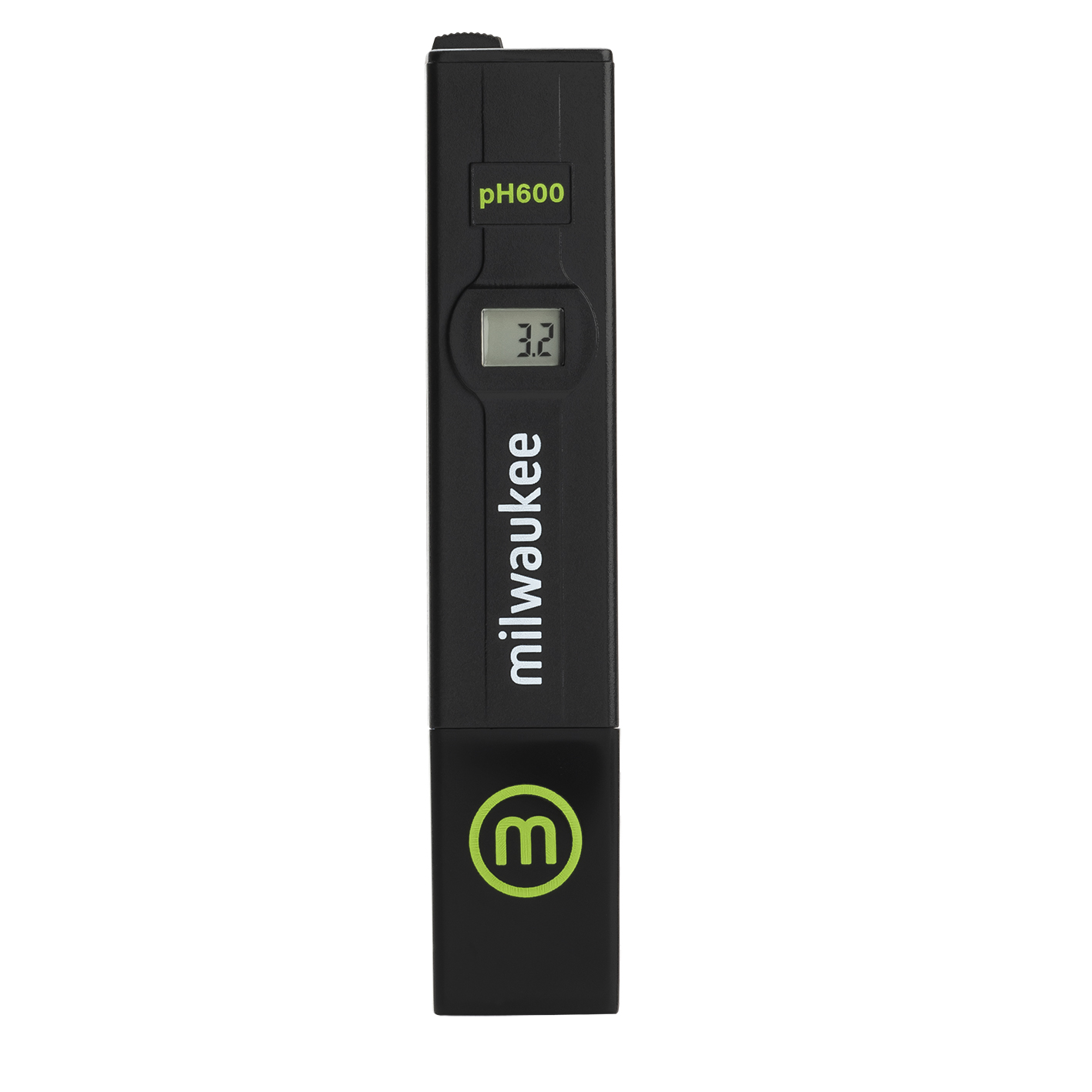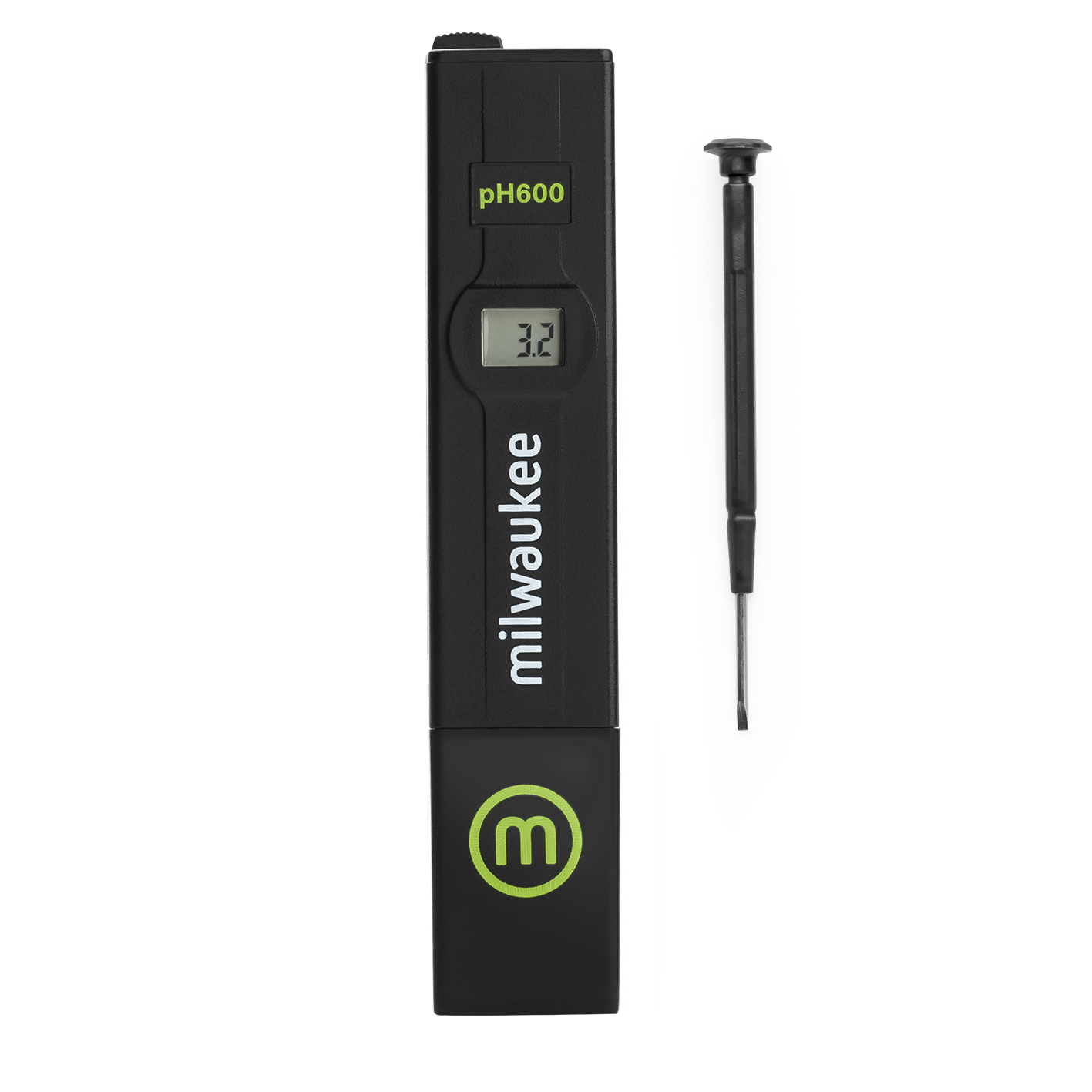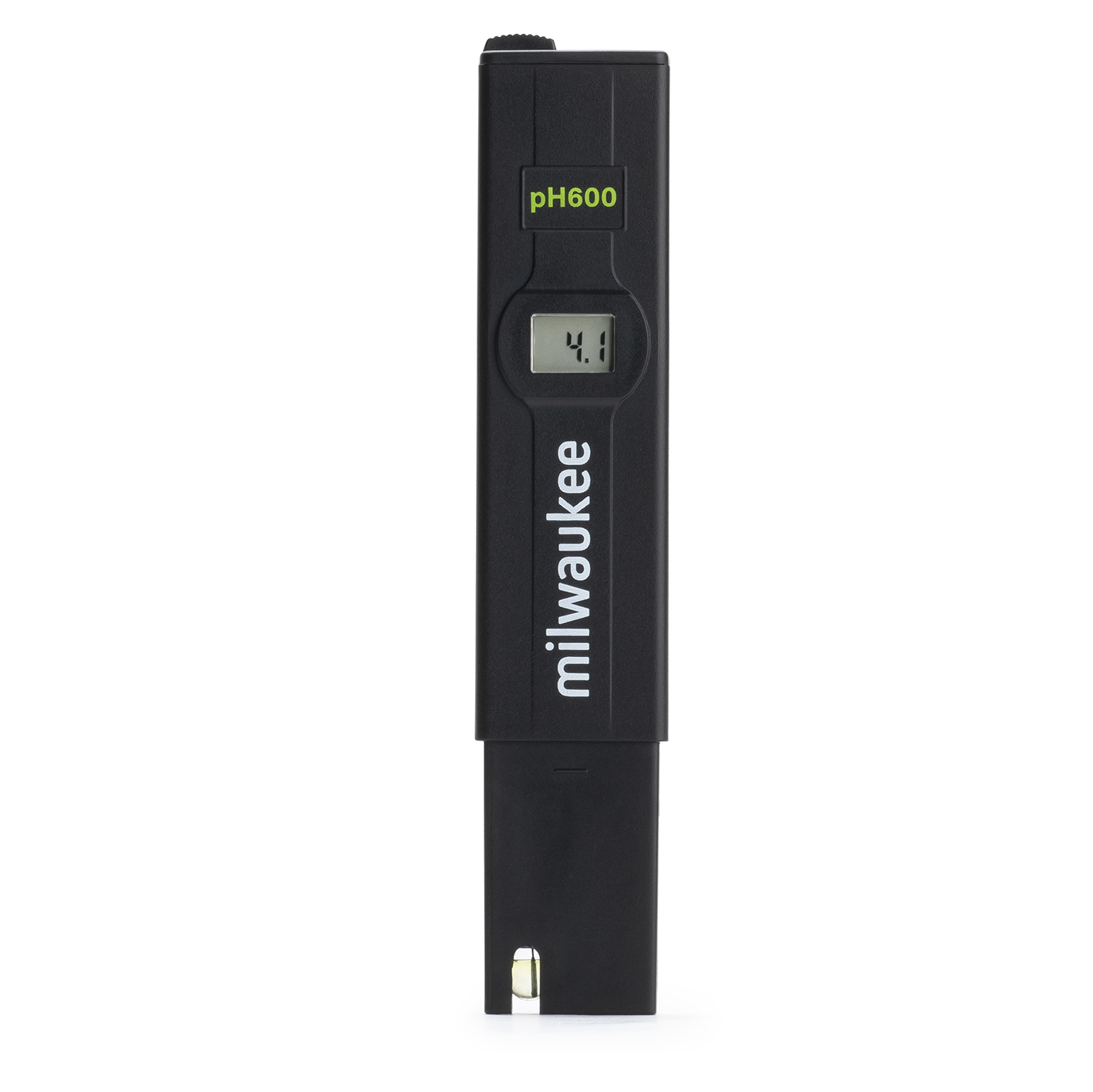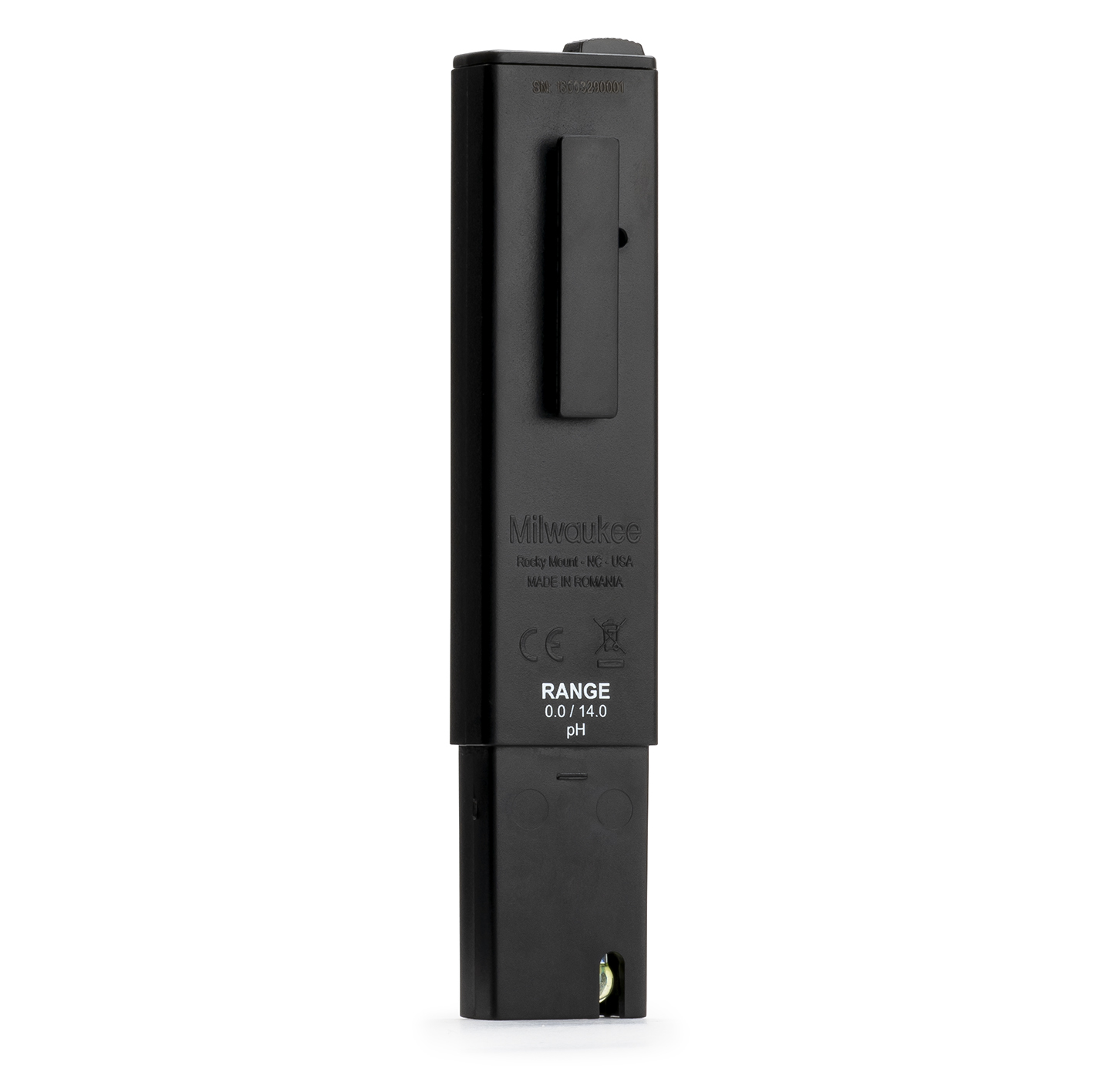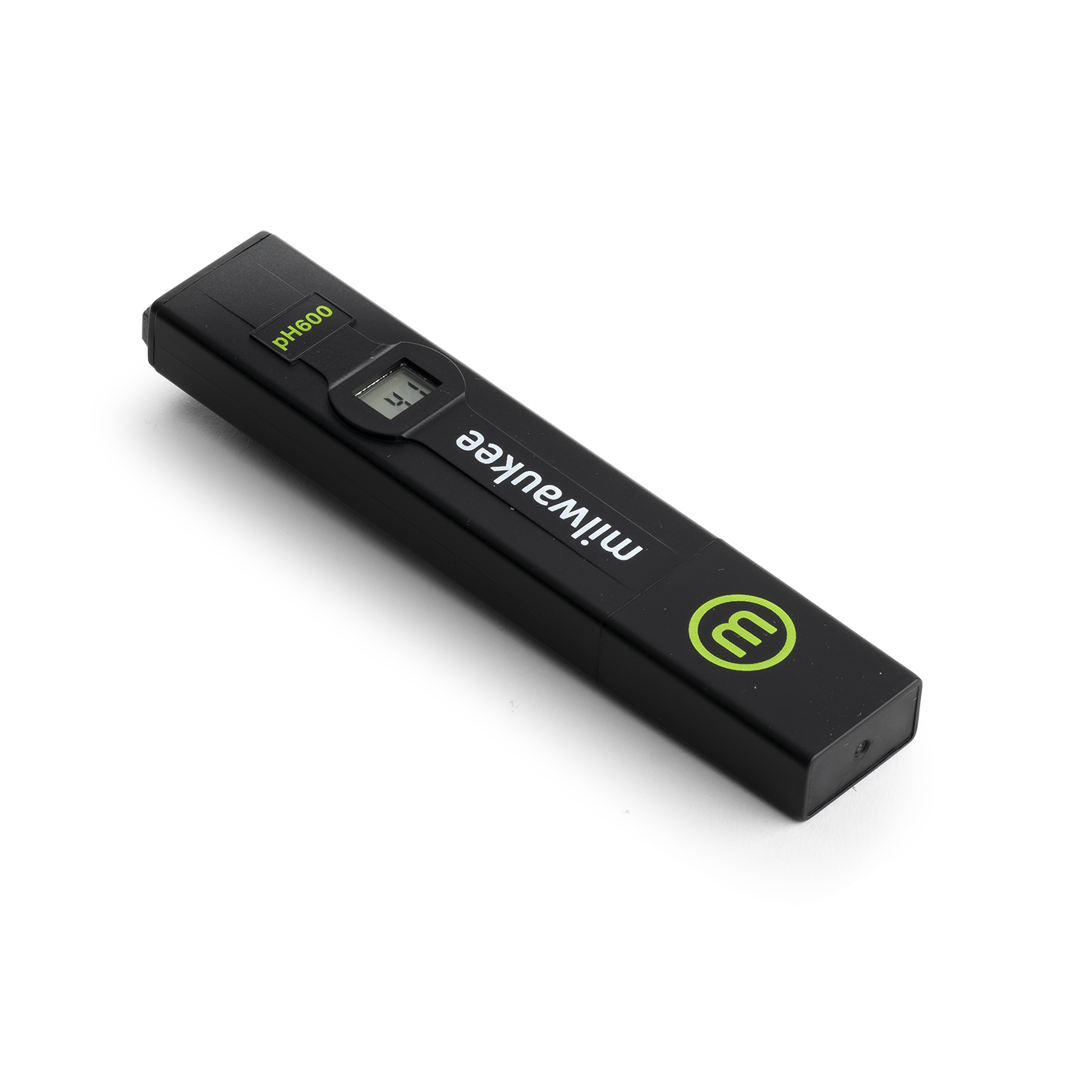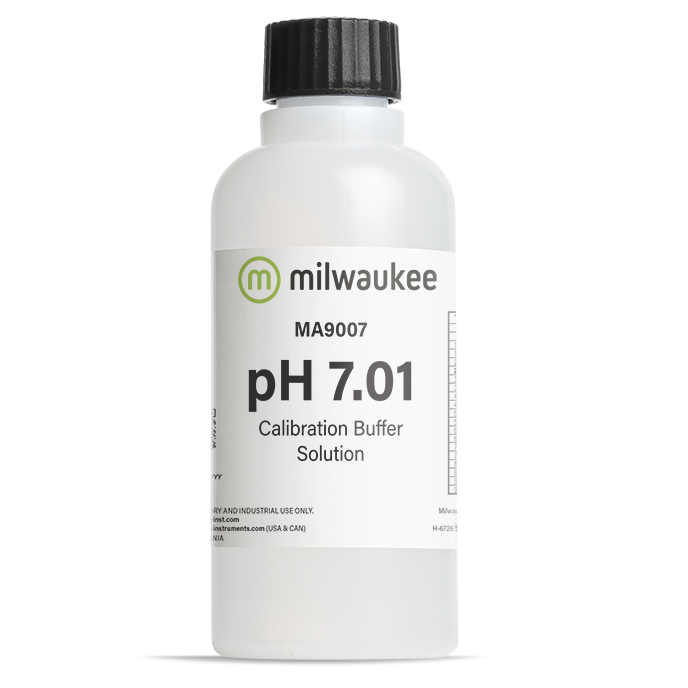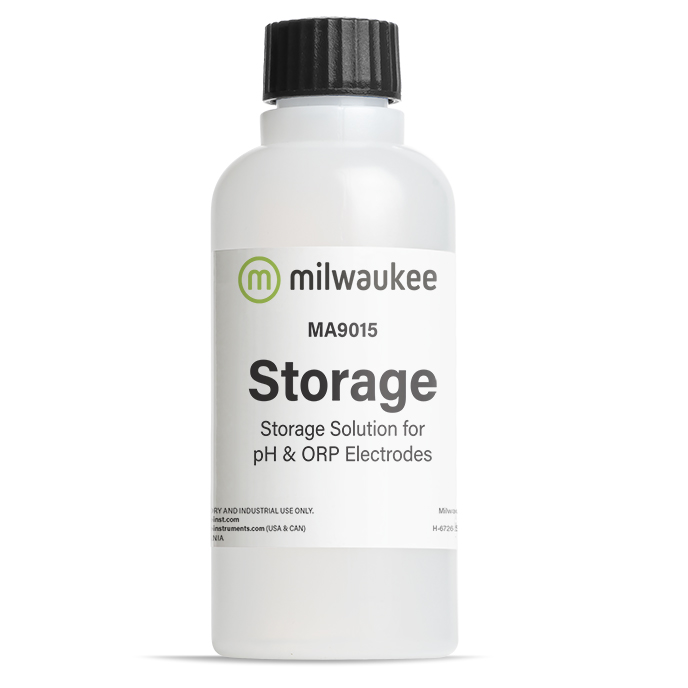Your shopping cart is currently empty.
Milwaukee PH600 Digital pH Pen – Accurate & Affordable pH Testing
The Milwaukee PH600 Digital pH Pen is a dependable and budget-friendly tool designed to simplify pH testing across a wide range of applications. Whether you're managing an aquarium, brewing at home, maintaining a hydroponic setup, or ensuring the proper pH in your swimming pool, the PH600 delivers the accuracy and ease you need.
With a precision of ±0.1 pH and single-point calibration, this compact tester ensures fast and reliable results without the hassle of complex setups. The large easy-to-read LCD display allows for quick viewing of measurements, making it ideal even for beginners. The lightweight, pen-style design offers portability and convenience, so you can take it with you wherever you need to test.
Built with quality and simplicity in mind, the PH600 offers a perfect entry point into digital pH monitoring without sacrificing performance. It comes complete with a calibration screwdriver and a 20 mL sachet of pH 7.01 buffer solution so you can start testing right out of the box.
Whether you're a hobbyist or a professional, the Milwaukee PH600 is your go-to choice for affordable, fast, and reliable pH testing.
Why Choose the Milwaukee PH600?
· Accurate & Reliable – Measures pH from 0.0 to 14.0 with ±0.1 pH precision
· User-Friendly – Simple one-point manual calibration for quick setup.
· Compact & Portable – Pocket-sized design for easy on-the-go testing.
· Long Battery Life – Operates for up to 700 hours on a single battery.
· Affordable & Effective – Ideal for hobbyists and professionals alike.
Proper Care & Maintenance
To ensure long-lasting accuracy and performance from your Milwaukee PH600 Digital pH Pen, proper care and maintenance are essential. Follow these tips to keep your tester in top condition:
- Clean the probe regularly: After each use, rinse the electrode with distilled water and gently blot dry with a soft tissue. For thorough cleaning, especially after testing solutions that may leave residue (like nutrient mixes or aquarium water), use a pH electrode cleaning solution to remove build-up and prevent contamination.
- Store the tester properly: Never allow the electrode to dry out, as this can affect response time and accuracy. When not in use, always store the PH600 upright with the protective cap filled with storage solution or pH 7.01 buffer solution. Avoid storing in distilled or deionized water, as this can damage the sensor.
- Calibrate regularly: Regular calibration is key to maintaining accuracy. Use a pH 7.01 buffer solution to perform single-point calibration before each testing session or at least weekly, depending on frequency of use. Replace the calibration solution periodically to ensure reliable results.
By following these simple maintenance steps, you’ll extend the life of your pH pen and ensure accurate readings every time.
Order the Milwaukee PH600 Today!
Get precise pH readings for aquariums, hydroponics, pools, and water testing
at an affordable price!
Specifications
Application
Aquariums, KOI Ponds & Fishkeeping
Maintaining stable pH levels is vital for the health and well-being of fish, corals, and aquatic plants in both freshwater and saltwater environments. Sudden pH shifts can cause stress, disease, or even death in sensitive species. The Milwaukee PH600 Digital pH Pen offers a simple, reliable solution for frequent pH monitoring, helping hobbyists and professionals alike maintain a healthy aquatic environment.
Why pH Matters in Aquariums:
-
Freshwater fish typically thrive in a pH range between 6.5 and 7.5, depending on the species.
-
Saltwater and reef aquariums often require a slightly higher pH range, around 8.0 to 8.4.
-
pH can fluctuate due to overfeeding, CO₂ buildup, decaying organic matter, or inconsistent water changes, all of which can affect fish health.
Regular monitoring allows for early detection and corrective actions before issues escalate.
How to Use the PH600 in Aquariums:
-
Calibrate the pH meter using a fresh pH 7.01 buffer solution. This ensures accurate results.
-
Rinse the electrode with distilled water to avoid cross-contamination, then gently blot dry.
-
Submerge the probe into the aquarium water, preferably in an area with good circulation for a more representative reading.
-
Wait for the reading to stabilize—this usually takes a few seconds.
-
Record the pH and compare it with the desired range for your aquarium type.
-
Adjust water parameters if needed using appropriate water conditioners, buffers, or water changes.
Regular pH testing—daily for sensitive systems or weekly for stable setups—ensures your aquatic life thrives in a consistent, healthy environment.
Hydroponics & Horticulture
In hydroponic systems, maintaining the proper pH level is crucial for efficient nutrient uptake and healthy plant growth. When pH drifts out of range, essential nutrients like nitrogen, phosphorus, and potassium can become unavailable to plants—even if they’re present in the solution. The Milwaukee PH600 Digital pH Pen offers a fast, accurate, and affordable way to stay in control of your nutrient solution’s pH.
Why pH Matters in Hydroponics:
-
Most hydroponic plants thrive in a pH range of 5.5 to 6.5, depending on the crop.
-
Low pH can cause nutrient toxicity (e.g., iron or manganese), while high pH can lead to deficiencies (e.g., calcium or magnesium).
-
Environmental factors, nutrient mixes, and water quality can all cause pH fluctuations, so regular testing is essential.
How to Use the PH600 in Hydroponics:
-
Calibrate the tester before each testing session using a fresh pH 7.01 buffer solution for accurate results.
-
Rinse the electrode with distilled water to avoid cross-contamination, and gently blot dry.
-
Insert the probe into the nutrient reservoir or directly into a sample of the solution.
-
Wait for the reading to stabilize—the value should remain steady for a few seconds.
-
Compare the reading with the target range for your specific plants.
-
Adjust pH as needed using pH Up or pH Down solutions, adding small amounts and retesting until the desired level is reached.
By checking pH daily, especially after nutrient changes or top-ups, you can optimize plant health, growth, and yields in any hydroponic or soil-less setup.
Swimming Pools & Water Treatment
Maintaining the correct pH level in your pool is essential for water clarity, comfort, and equipment longevity. Improper pH can lead to skin and eye irritation, cloudy water, and even damage to pool surfaces and systems. With the Milwaukee PH600 Digital pH Pen, you can easily monitor and adjust your pool’s pH to keep it balanced and safe for swimmers.
Why pH Balance Matters in Pools:
-
The ideal pH range for pool water is 7.2 to 7.6.
-
Low pH (acidic water) can cause corrosion of metal components and irritate eyes and skin.
-
High pH (alkaline water) can lead to scaling on pool surfaces, cloudy water, and reduce chlorine effectiveness.
-
Environmental factors like rain, leaves, swimmer load, and chemical treatments can all shift your pool’s pH.
How to Use the PH600 for Pool Maintenance:
-
Calibrate the tester using a fresh pH 7.01 buffer solution before testing to ensure reliable accuracy.
-
Rinse the electrode with clean water, then gently blot dry.
-
Dip the probe into a sample of pool water, preferably collected from elbow depth in a clean container or away from jets and skimmers.
-
Wait for the reading to stabilize, and then note the result.
-
Adjust the pH as needed using pool chemicals such as pH increaser (sodium carbonate) or pH decreaser (sodium bisulfate), following product instructions carefully.
-
Recheck after treatment to ensure the water returns to the proper pH range.
Routine testing—daily during high usage periods or at least 2–3 times a week—helps maintain safe, clean, and comfortable water, protecting both swimmers and your investment in the pool system.
Homebrewing & Winemaking
In brewing and winemaking, precise pH control is a key factor in achieving consistent fermentation, microbial stability, and the desired flavor profile. Whether you're crafting beer, wine, cider, or mead, the Milwaukee PH600 Digital pH Pen helps you monitor acidity levels with confidence throughout the entire production process.
Why pH Matters in Brewing & Winemaking:
-
In beer brewing, the ideal mash pH range is 5.2 to 5.6, which promotes optimal enzyme activity, flavor development, and clarity.
-
In winemaking, the pH of must and wine affects fermentation quality, color stability, and preservation. Typical pH values range from 3.2 to 3.6 for most wines.
-
Out-of-range pH can lead to poor fermentation, off-flavors, or spoilage from unwanted microbes.
How to Use the PH600 in Brewing & Winemaking:
-
Calibrate the meter before each use using fresh pH 7.01 buffer solution to maintain accuracy.
-
Rinse the probe with distilled water between readings to avoid residue contamination.
-
Measure pH during different stages of the process:
-
For beer: check pH during mashing, boiling, and post-fermentation.
-
For wine: monitor pH in grape must, during fermentation, and in the finished wine before bottling.
-
-
Adjust acidity as needed using common brewing additives:
-
For beer: use brewing salts (e.g., lactic acid or phosphoric acid) to lower pH, or calcium carbonate to raise it.
-
For wine: use tartaric, citric, or malic acid to adjust must pH before fermentation.
-
Consistent pH monitoring ensures your beverages ferment smoothly, taste great, and are microbiologically stable—a must for both hobbyists and serious craft producers.
February 9, 2022 08:56
KIt is a very good product.
Thank you for the fast delivery and for your support.



